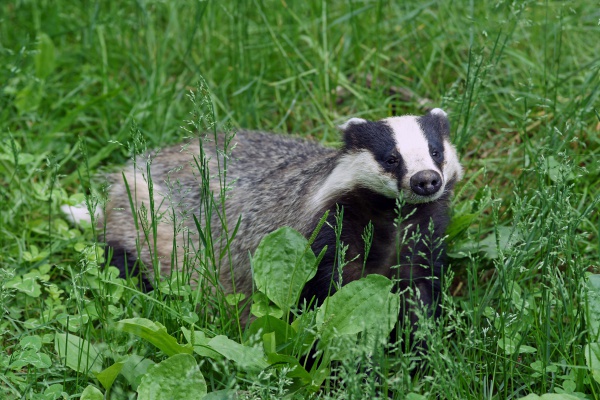Facts About Eurasian Badger
The European badger, also known as the Eurasian badger, is a captivating member of the Mustelidae family, found throughout Europe and parts of Western Asia. It is classified as "Least Concern" on the IUCN Red List due to its extensive range and stable population. These robust animals possess a small head, a sturdy body, and distinctive fur that features black, white, brown, and grey shades.
European badgers are nocturnal creatures that live in social groups and construct intricate underground dwellings known as setts. These setts contain multiple chambers and entrances, providing long-term accommodations for several families. They maintain their homes meticulously and will sometimes share their burrows with other species; however, they can be quite aggressive if threatened.
As omnivores, their diet is diverse, comprising earthworms, insects, small mammals, carrion, cereals, and tubers. They follow a monogamous lifestyle and usually give birth to up to five cubs in the spring. Badgers communicate through various vocalizations and adhere to a hierarchical social structure.
During winter, badgers enter a period of torpor, during which they build up fat reserves and seal their sett entrances with leaves and earth to retain warmth. They inhabit a range of environments, including woodlands, clearings, and even suburban areas.
European badgers face few natural predators but may occasionally fall prey to wolves, lynxes, bears, and large domestic dogs. They are also susceptible to diseases such as bovine tuberculosis and various parasites. Historically, they were hunted and subjected to cruel practices like badger-baiting, which is now illegal. However, in some regions, badgers are still culled to control the spread of diseases like bovine tuberculosis, leading to controversy and public protests.
In folklore and literature, badgers are often portrayed in various roles, from wise old hermits to fierce warriors. Although not endangered, they hold substantial cultural significance in many societies. Some people have even domesticated badgers as pets or used their meat, pelts, and hair for traditional items like sporrans and shaving brushes.

 Georgia
Georgia